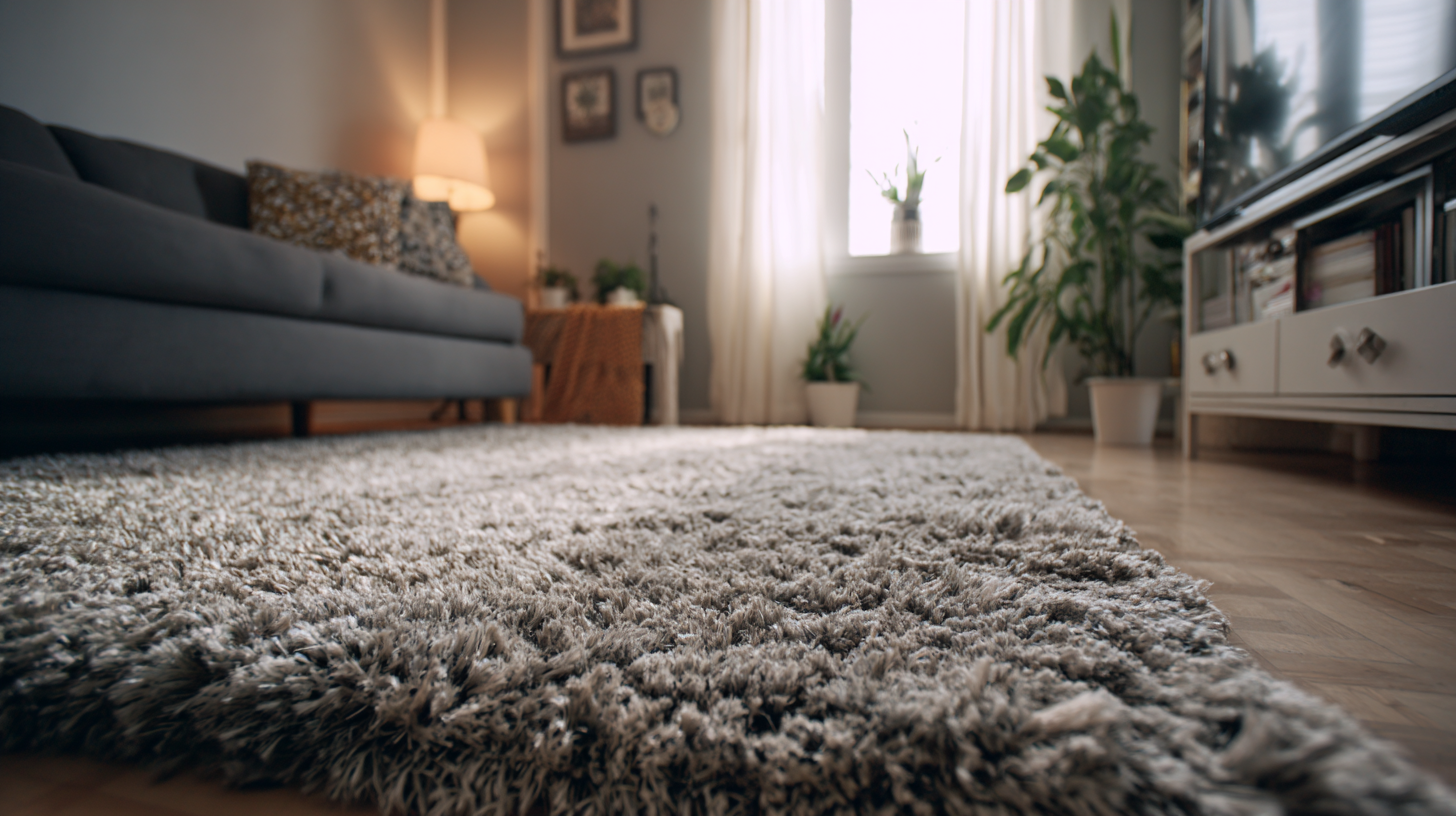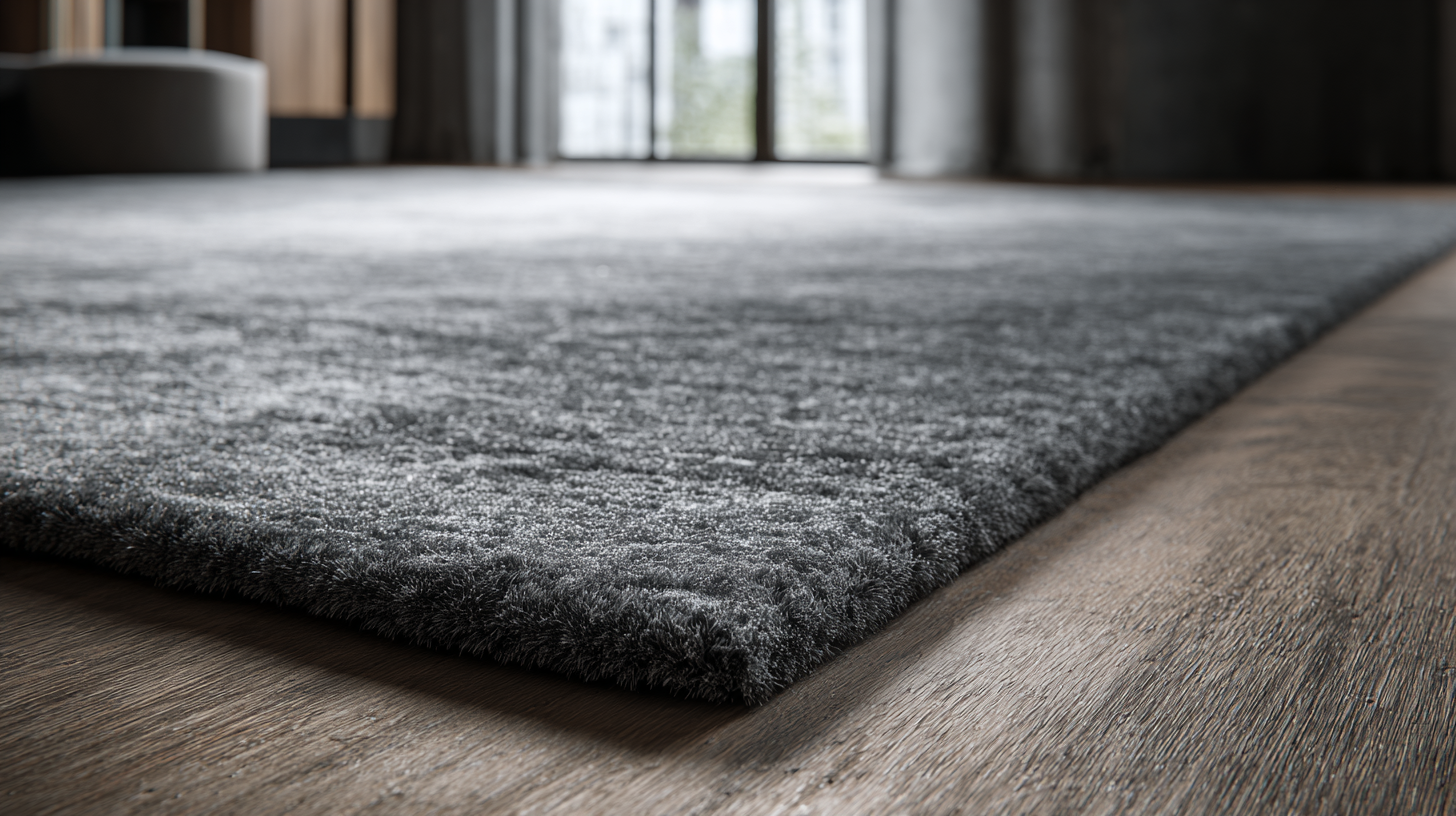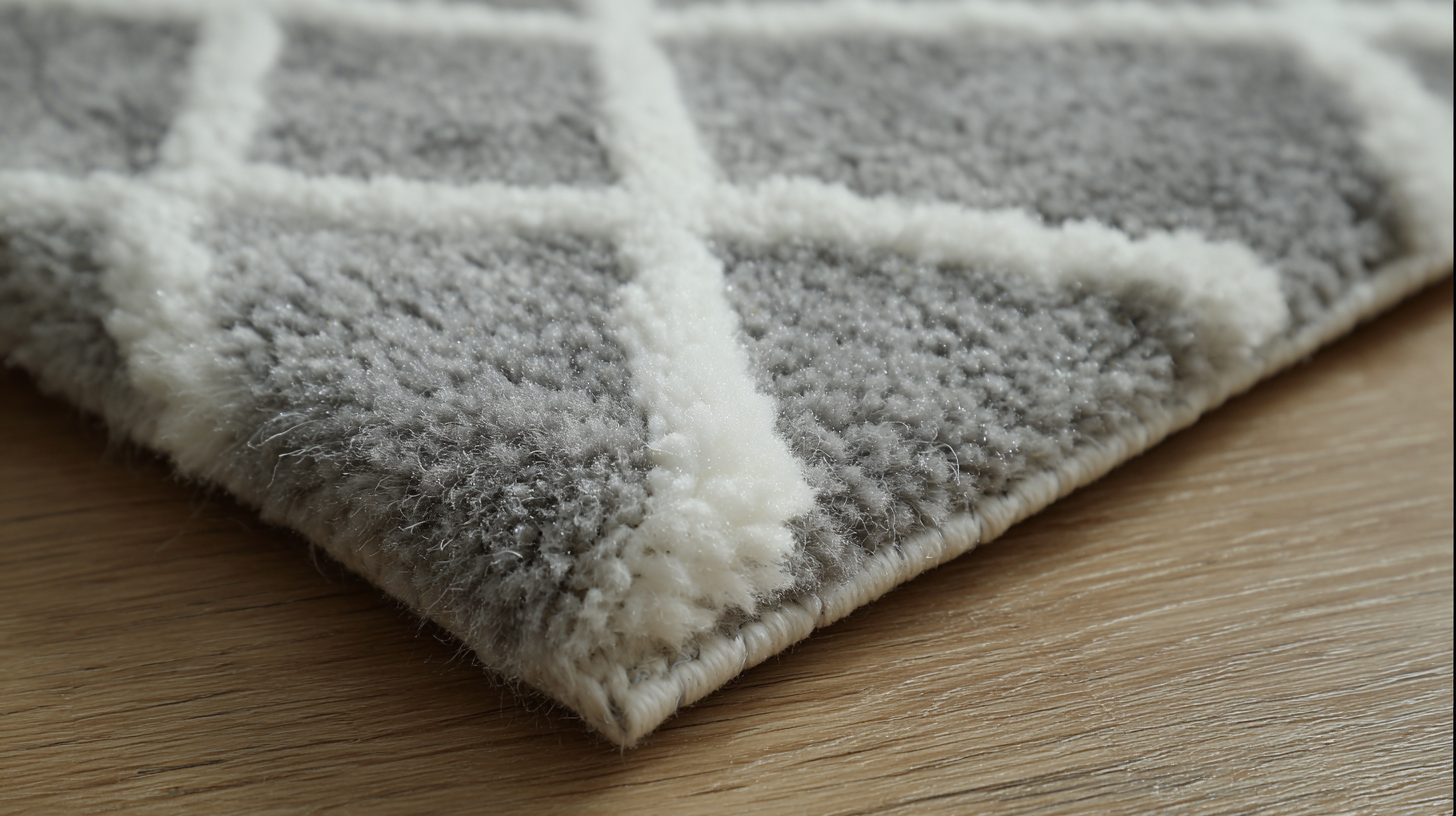
-
Home
-
About Us
-
Products
-
News
-
Blog
-
Contact Us
Leave Your Message

In today's rapidly evolving home decor market, the concept of sustainability and practicality is increasingly resonating with consumers. Among the myriad of choices, the Grey Washable Rug has emerged as a favorite due to its aesthetic appeal and functional benefits. This article delves into the industry standards surrounding Grey Washable Rugs, exploring their design, materials, and environmental impact. Furthermore, we will analyze the advantages of after-sales service and the associated maintenance costs that contribute to the overall value of these rugs. Understanding how to properly care for and maintain your Grey Washable Rug not only enhances its lifespan but also fosters a sustainable lifestyle. Join us as we navigate through these insights, ensuring that you make an informed decision in your quest for the perfect rug that fits both style and purpose.

When it comes to choosing a grey washable rug, eco-friendly materials play a crucial role in making a responsible selection. The impact of our choices goes beyond aesthetics and comfort; it extends to environmental health. Rugs made from sustainable materials such as organic cotton, hemp, or recycled fibers not only reduce ecological footprints but also contribute to healthier indoor air quality. These materials are often free from harmful chemicals and toxins, making them safer for families, pets, and the environment.

Furthermore, the global movement towards sustainability has highlighted the importance of supporting ethical manufacturing practices in the home textile industry. Opting for rugs made from eco-friendly materials often means choosing products created by companies that prioritize fair labor practices and respect for natural resources. By investing in these items, consumers can drive demand for greener options, encouraging more brands to adopt sustainable practices. Ultimately, selecting a grey washable rug crafted from eco-friendly materials allows individuals to make a statement—one that champions both style and environmental stewardship.
When selecting the best grey washable rug, there are several key features to consider to ensure both functionality and aesthetic appeal. First, look for material quality; rugs made from durable fibers like polypropylene or nylon are often preferred for their stain resistance and ease of cleaning. According to a recent report by the Market Research Future, the demand for washable rugs is projected to increase by 7.5% annually as homeowners prioritize low-maintenance options for their living spaces.
Another essential factor is the size and design of the rug. A well-chosen size can enhance the overall look of a room, making it feel more spacious and inviting. Industry experts recommend selecting a rug that is large enough to accommodate key furniture pieces, creating a cohesive layout. Additionally, opting for a versatile grey color can provide a neutral base that complements various interior styles, which is particularly appealing in a global market that trends toward minimalist aesthetics.
Tip: Always check the washing instructions and ensure that the rug maintains its color and shape after washing. Rugs that are machine washable with cold water settings typically provide the best longevity. Moreover, consider investing in a rug pad to prevent slipping and increase comfort underfoot, prolonging the lifespan of your rug in the process.
The manufacturing process of grey washable rugs is crucial in determining both sustainability and quality. Industry standards often influence the sourcing of materials, with manufacturers increasingly favoring recycled fibers and eco-friendly dyes. According to a report by the Global Sustainability Institute, up to 30% of the environmental impact associated with textile production can be mitigated through responsible material selection and sustainable practices. Manufacturers that adhere to these standards not only improve their ecological footprint but also enhance the durability and overall quality of their products.
To ensure a high-quality grey washable rug, consumers should look for brands that have certifications such as OEKO-TEX® or GOTS, which guarantee the absence of harmful substances and sustainable production methods. Additionally, understanding the weaving technique can provide insights into durability. Rugs made with tight weaves tend to last longer and maintain their aesthetic appeal.
Tip: When shopping for a rug, consider opting for washable options that utilize natural fibers like cotton or jute, which are not just environmentally friendly, but also biodegradable. Always check for manufacturers that transparently share their supply chain information, as transparency often translates to a commitment to quality and sustainability.
In recent years, grey washable rugs have surged in popularity within the home décor industry, becoming a staple for modern interiors. Their versatility allows them to seamlessly fit into various design aesthetics, from minimalist to bohemian. The timeless neutral tone of grey complements a wide range of color palettes, making it a go-to choice for homeowners looking to refresh their living spaces without overwhelming them. As global trends lean towards sustainable and practical home solutions, the appeal of washable rugs aligns perfectly with the demand for convenience and eco-friendliness.

When selecting a grey washable rug for your home, consider the material and care instructions. Opt for rugs made from sustainable fibers like cotton or synthetic blends that withstand frequent washing. This not only ensures easy maintenance but also promotes longevity. Additionally, always check the size of the rug in relation to the space. A well-sized rug can anchor a room, creating a cozy and inviting atmosphere while also enhancing the overall aesthetic.
Lastly, think about the rug's texture and pattern. A simple grey pattern can add subtle interest, contributing to a harmonious balance in your décor. Mixing different textures in your space—such as soft pillows or throws—will enhance the look and feel of the room, creating a warm and welcoming environment that reflects your personal style.
The rise of washable rugs has revolutionized home care and maintenance practices across the globe. According to a recent report by the Home Textile Industry Association, the market for washable rugs is projected to grow by 10% annually, reflecting an increasing consumer demand for practicality and hygiene in household items. This trend is particularly evident in urban areas, where space is limited, and easy cleaning solutions are essential. Washable rugs not only simplify the cleaning process, but they also meet the modern consumer's desire for homes that are both stylish and functional.
Additionally, the environmental impact of washable rugs cannot be understated. A study from EcoTextiles found that rugs made from sustainable materials, which can be easily cleaned and reused, reduce the need for frequent replacements and lower the overall carbon footprint associated with home furnishings. Moreover, as people become more environmentally conscious, the popularity of washable rugs contributes to a shift in purchasing behavior toward products that support sustainable living. This alignment with eco-friendly practices signifies a broader change in global home maintenance, where convenience meets environmental responsibility.